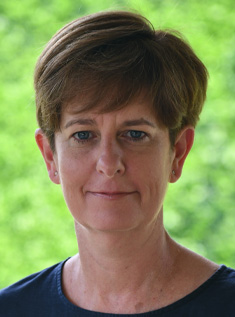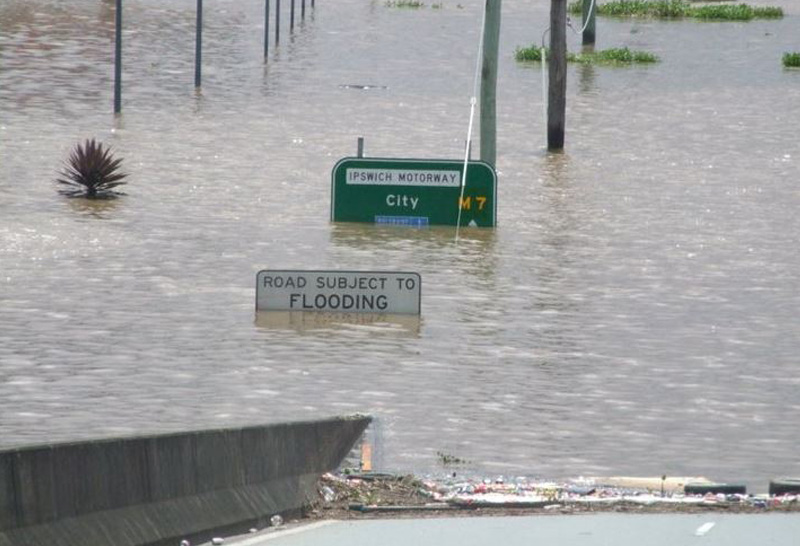 When floods occur, humans have a habit of looking for someone to blame. Rather than examine the underlying human-induced causes behind the disaster, it is easier and palatable to blame others and this avoids awkward issues of culpability. But in doing so, it can remove the opportunity to reduce the effects of future hazard events.
When floods occur, humans have a habit of looking for someone to blame. Rather than examine the underlying human-induced causes behind the disaster, it is easier and palatable to blame others and this avoids awkward issues of culpability. But in doing so, it can remove the opportunity to reduce the effects of future hazard events.
Floods are natural events, caused by heavy or intense rain over an extended period and, without humans, they are not disasters. It is the decision by humans to live and build on the floodplain that can have calamitous consequences that become a disaster. In Brisbane, after every major flood, society has reverted to a blame game, finding a scapegoat each time, rather than interrogating the human factors behind the disaster. My concern is that if society continues to find external sources to blame and not address the root problems, we lose opportunities for climate adaptation that will make communities safer.
In February 1893, a rain depression dumped 1,026mm of rain in the Brisbane area that resulted in flood heights at the then Port Office Gauge of 8.5m on 5 February and 9m on 19 February. Many viewed the floods as an ‘Act of God’. Others blamed ‘freaks of the weather God’ or the actions of ‘Dame Nature’.1 By calling floods an Act of God or ‘natural disaster’, those in authority are cleared of responsibility. With divine intervention and accidents of nature beyond their control, they could not be held accountable. The event could be dismissed as an aberration or rare calamity and urban growth on the floodplain continued unabated.

Submerged houses in South Brisbane after 1893 flood.
Source: University of Queensland.
On the Australia Day weekend in January 1974, a deep low-pressure system oscillated above the Brisbane River catchment and floodwaters reached 5.5m at the Port Office Gauge on 29 January. The community blamed Somerset Dam for not delivering the perceived (unrealistic) promise of flood immunity via water storage. By diverting blame to the dam, again society could avoid uncomfortable questions about floodplain development, poor planning laws and inadequate building codes. With the opening of Wivenhoe Dam in 1985 many people thought Brisbane was flood proof and urban growth expanded in flood-hazard areas.

Whole portions of Brisbane’s suburbs were flooded in 1974.
Source: Brisbane City Council Archives.
In January 2011, after intense rain, a flood peaked at 4.5m at the Port Office Gauge. People again looked for a scapegoat. Why had Wivenhoe Dam not prevented the flood? Fuelled by media stories, many called the flood a ‘great avoidable catastrophe’ or a ‘dam release flood’ caused by mismanagement by the operating engineers.2 For many, the Queensland Floods Commission of Inquiry3, a Crime and Misconduct Commission investigation4 and a class action that followed the floods reaffirmed a faith in dams, if only they were operated differently. This approach avoided questioning the region’s dependence on the dam for flood mitigation and diverted discussions away from culpability by governments and land-use management; a debate many wished to avoid. Rather than challenge the reliance on engineering to control floods, the public debate shifted to blaming individuals.

Major Brisbane highways were cut by flood waters in 2011.
Source: Brisbane City Council Archives.
Brisbane experienced major flooding again in February 2022, peaking at 3.85m at the Brisbane Gauge. Much of the rain fell downstream of Wivenhoe Dam in the unregulated portion of the river system and poured into Brisbane’s complex network of creeks. Flooding was inevitable and largely unpreventable. Political leaders, the public and the media largely focused on Nature and the unrelenting rain that pummelled the city, describing it as an unrelenting and unpredictable ‘rain bomb’.5 Without a dam or operators to blame, it seems that criticism largely reverted to Nature and, once again, the opportunity to question human behaviour was lost.
While the timing, temporal and spatial characteristics of the next flood are unknown, its arrival is certain. Climate change brings an increased chance of intense rain and flooding because every additional degree in atmospheric temperature means it can hold around 7% more moisture.6 With a warming climate, most scientists predict that future floods will be greater than the largest recorded floods.
I am concerned that climate change will be used by those with authority as another factor that can be blamed for floods and other hazards of nature. It won’t be the fault of those who fail to address floodplain development or climate adaptation. If we don’t accept that anthropogenic factors have caused or exacerbated climate change then it will provide a convenient scapegoat for those who govern, work or live in Brisbane and for populations in high-risk hazard areas. Climate change will be added to Nature, God, dams and dam operators in the human arsenal of factors that can be blamed for damage and loss from floods.
Until people who live in high-flood-risk areas (most of the populated east coast of Australia) accept that the flood hazard has anthropogenic causes—primarily the human encroachment on the floodplain—our towns and cities will repeat the mistakes of the past. Instead, particularly for Brisbane, we must recognise these factors and adapt to the realities of living in a city beside a sub-tropical river that is prone to flooding. Only then can we stop diverting blame and find the courage to make the systemic changes needed to reduce future flood disasters.


